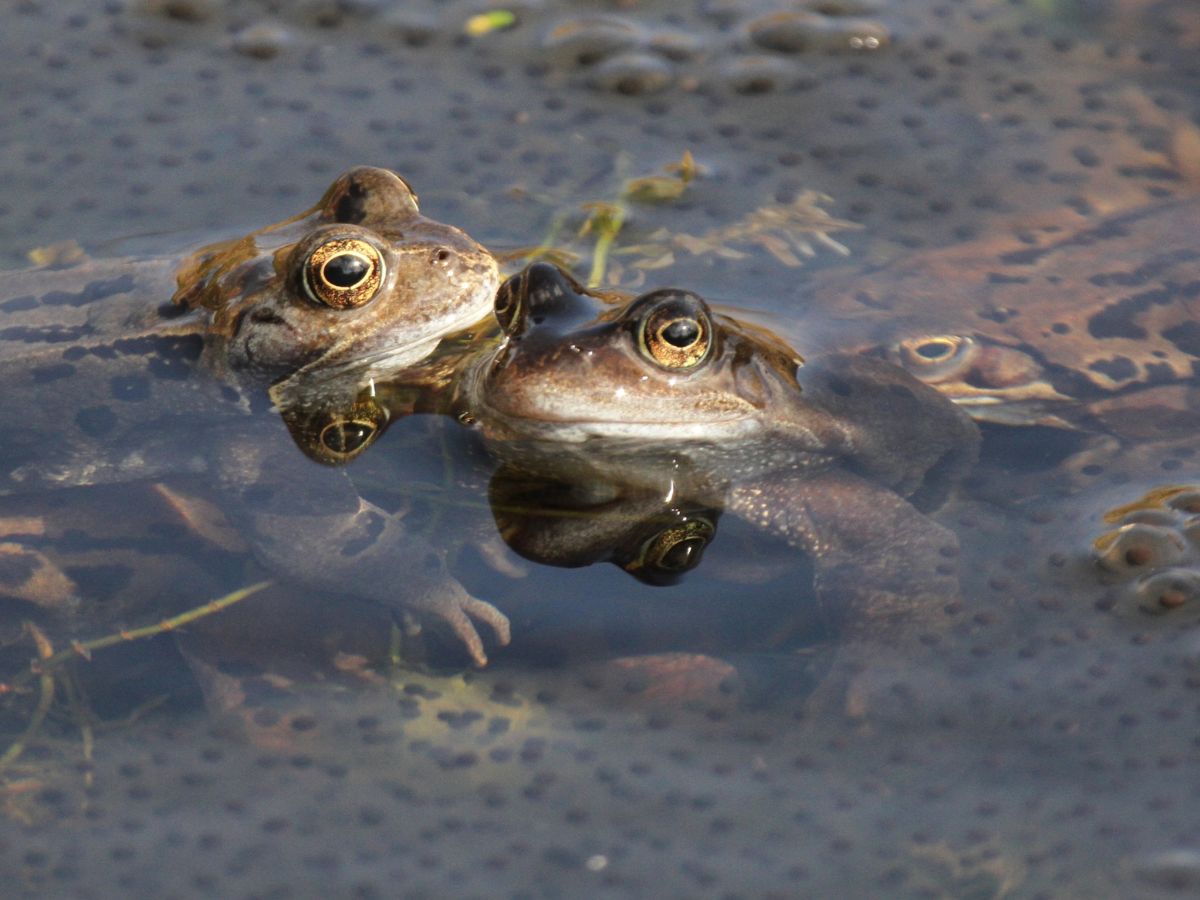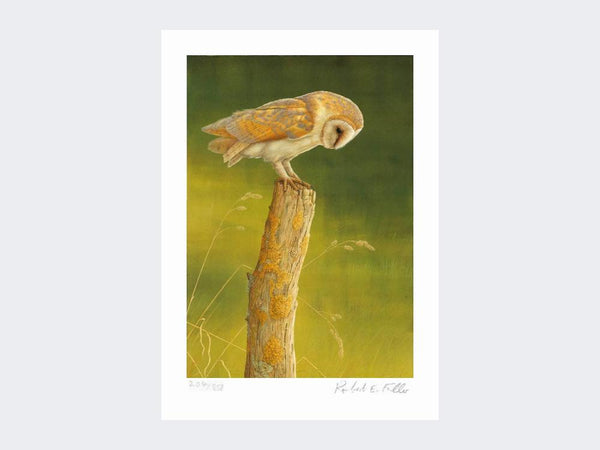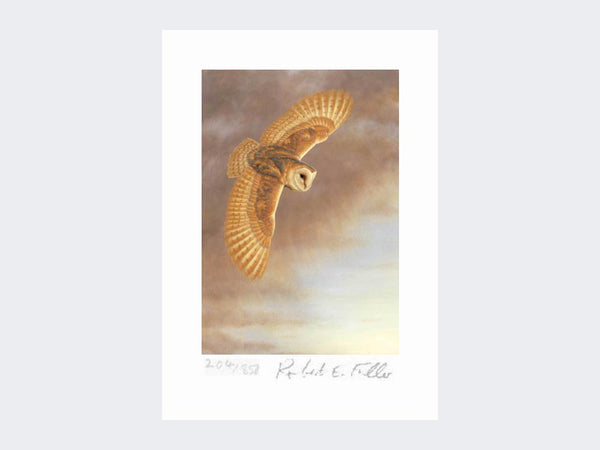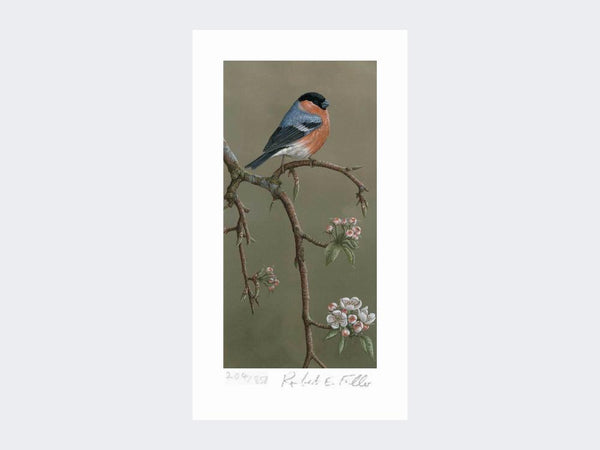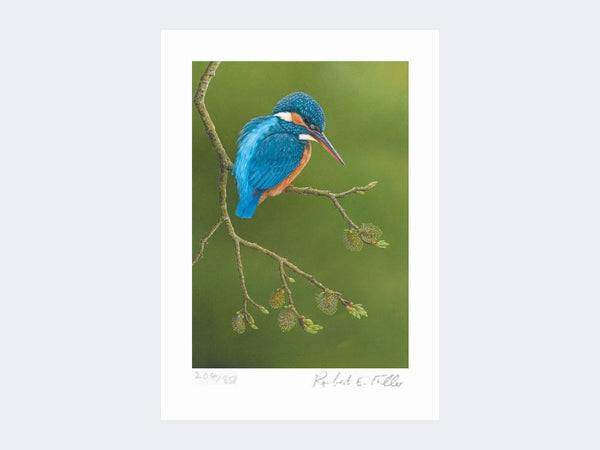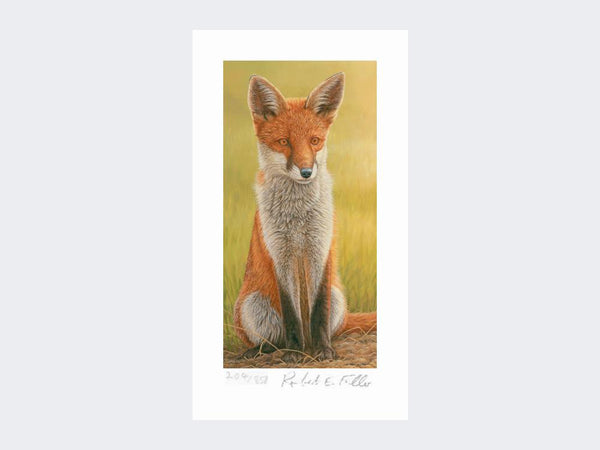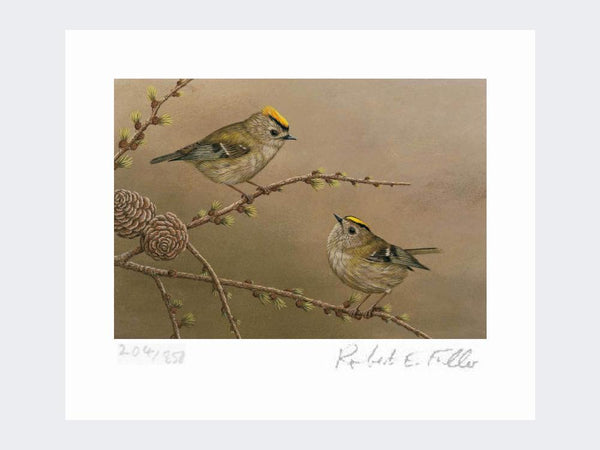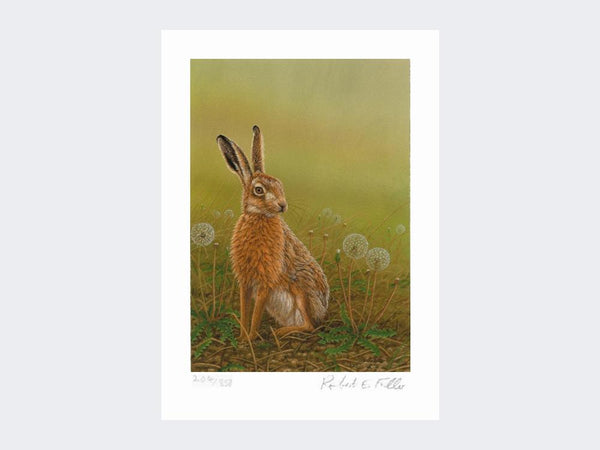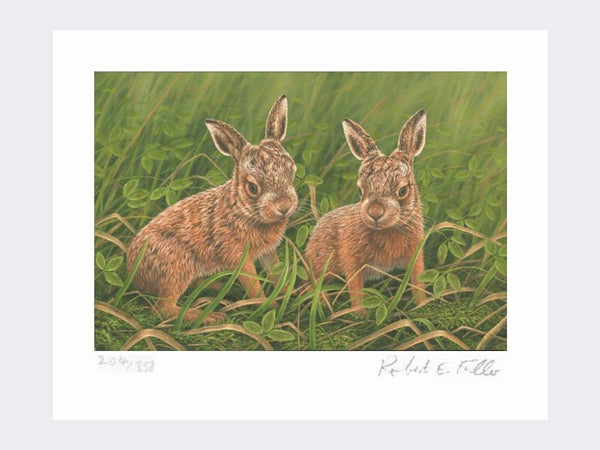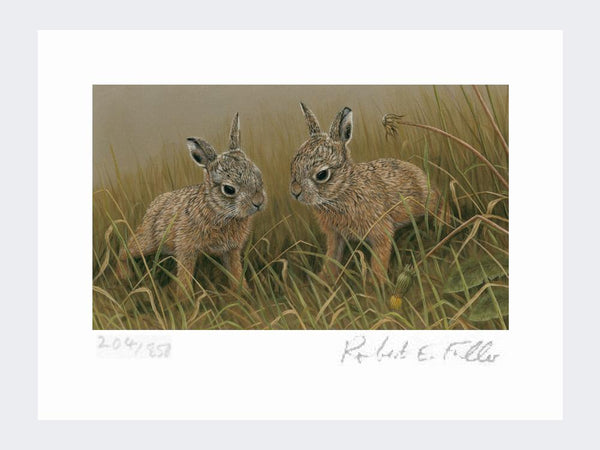My earliest memories of the natural world are of the creatures that lived in our garden pond at my family home at Great Givendale, high on the Yorkshire Wolds.

Early memories
I was two years old when we moved there, after my dad took a job as the farm manager. Looking back at the photographs of those first years, our large manor house looked like a building site. But when I was four, my dad made time to landscape the garden and build a garden pond. He added aquatic plants and placed York stone flags along the front edge of the pond, and I have memories of being given the important job of filling the pond with a hose. As it matured, this became my world. I spent more and more of my waking hours lying beside its front edge armed with nets and a line of containers. These were mostly buckets and jam jars as well as a large magnifying glass which I used to take a closer look at my catches.
Identifying pond creatures
Noticing my fascination, my mum got me a spotters’ guide to pond life, and I would spend my days ticking off the species I found. There were the obvious: frog, toads and newts, and the less noticeable; diving beetles and their larvae, pond skaters, water boatmen, dragonflies and even the, aptly-named and quite intimidatingly large, wolf spider.

As my list of species grew, so did my knowledge and understanding of these bizarre creatures. I used to spend so long lying on the edge of the pond the cold York stone flags would sap my body heat. But as the summer came the sun would warm up the flags and I would be cosy as my arms dangled in the cold water.

Pond obsessed
My family still tell the story of how I was so absorbed in the creatures beneath the water I didn’t even budge when my brother passed by with the lawnmower, except to lift my legs at the knee and then drop my legs back down so he could mow the grass beneath them. I was still of an age when water, including paddling pools, was considered a major hazard for children - understandably so since every year there were tragic accidents. I remember the remarks from visiting friends or family:
" Rob’s too close to the pond “ or " don’t you worry about the pond?”
But my parents trusted me to be sensible. They also knew I wouldn’t do anything that might disturb the underwater world I was so fascinated by. Sometimes if other kids came round my dad would make an attempt at fencing off the pond, but inevitably a child found its way round the back and fell in any way! For me this was always upsetting, since they usually damaged the water lilies and turn the water murky.
Dyslexia
I spent so much time gazing into the pond, my hands cupped over the water to cut out the reflections. I was totally disengaged at school and was slow to read and write, and yet at the same time I knew so much about all the incredible species in the garden pond.
Thankfully, she and my dad encouraged my interests and later when, it was discovered I had dyslexia, I was grateful for their support.
My condition meant that I often switched off from many things, but really focused my mind on what I was interested in. The creatures I spotted in the pond are etched in my mind to this day. I would follow the lives of the frogs and toads in the pond throughout their time there: from early courtship to spawning. I watched tadpoles hatch and kept on watching until I saw hundreds of tiny froglets and toadlets as they emerged into the damp vegetation on the edges of the pond.
Smooth newts, fly larvae & whirligigs
Then there were the smooth newts. I loved watching their elaborate courtship dance in the spring. The male with his heightened colours, dark spots, orange under parts and frilled tail and crest, displaying to the plainer females. After mating I found their clear eggs laid in clusters under the water lilies or on plant stems below the surface. Once hatched, these young newts were one of my favourite things to watch. Known as gilled larvae, they were translucent, expect for a sandy pinkish colour, and, as their name suggests, sported gills on the outside of their bodies. This gave their necks a frilled appearance which lessened as they grew when their colouring also darkened until they looked like a mini version of the females.
I also collected caddis fly larvae. These soft, worm-like creatures would coat themselves in minute stones or specks of plant matter until just their heads and feet protruded out which blew their camouflage once they started feeding. I was always fascinated how some of these larvae just used stones to decorate their bodies and some just used plant matter and others a mixture of both. Then I got distracted by the whirligig beetles whizzing around in circles on the surface with no apparent pattern or plan. I just couldn’t figure them out at all.
Predatory water boatmen
As I came across new creatures, I would catch and then study them before letting them go. My quest to learn more about each species was never-ending: from tiny Daphnia, or water fleas, to dramatic predators like water boatmen. These creatures stalked near the surface of the water catching both the small invertebrates, and even tadpoles, that passed beneath them as well as any unsuspecting insects that might fall from above.

Like pond skaters, water boatmen have sensitive feet which they use to feel the vibration of a struggling insect and this shared tactic means the competition between them is fierce. I once watched as pond skater, noticing a water boatman pouncing on a fly, dash across the water surface to steal its catch. The power struggle that ensued was nail-biting stuff. The water boatman fought to pull its victim under, while the pond skater held on fiercely, trying to keep its meal at the surface.
Wolf spider attack
Then the drama caught the attention of a wolf spider lurking underneath the York stone, right where my elbows rested. I watched as it slowly emerged, its front legs balancing on top of the water, feeling the vibrations. Bit by bit, it edged out into the water until most of its feet were touching the surface, picking up the ripples from the struggle. With blistering speed the spider suddenly dashed across the water and, since the spider dwarfed the other two predators, cast both casually aside and snatched their catch.
I watched it return across the water, carrying the poor fly back to its lair under the York stone. On another occasion I saw this spider take a pond skater back with it as well. Enthralled, I couldn’t help wondering how one of the UK’s largest spiders was able to walk on water. My need to know was a huge incentive to read and I was soon poring over my parents’ nature books, keen to learn more about these epic creatures. I read that wolf spiders use tiny hairs on their feet to spread their weight and these create tension on the surface of the water, enough for them to be able to walk across it.
Diving beetle larvae: water tigers
As fascinating as they were, these small predators were outdone by what I considered to be the top pond predator of all: diving beetle larvae. Known by some as the water tiger, due to their voracious appetite, the larvae of the great diving beetle measure up to 6cm long, as long as one of my fingers, and are armed with large hypodermic pincers at the front of their heads.
With six powerful legs and a scaled body, these creatures looked like something out of a sci-fi movie and, I soon learned, had a reputation to match. Great diving beetle larvae are able to catch small fish and even newts and to see them in action was spectacular. They would lay in wait, often just below the surface of the water at the edge of the aquatic plants, the tips of their tail breaking the surface.
These creatures use a special adaptation, a siphon-like tube known as a spiracle located at the end of their abdomens, to breathe through. As a young boy, the fact that they could literally breathe through their bums was just fascinating! I always remember watching one ambush a tadpole. As the tadpole swam within striking distance, the greater diving beetle larva sprang forward, making me jump as it pounced, and plunged its large sickle shaped jaws into its victim.
The larvae inject their prey with digestive juices and then suck their insides out. After a while all that was left of the tadpole was its skin and tail, which the larva then dropped. I watched it float down to the bottom of the pond where the newts arrived to finish off what was left. As a young boy, I thought these dramas were the coolest things ever. Although, when one day I caught a larva and it almost did the same to my finger as it had done to the tadpole, I gained a little more perspective on the situation! My finger was incredibly sore for days.
Adult diving beetles were harder to observe. They were fast and often on the move, hunting through the pond weed. If they caught something they disappeared off into the where it was difficult to follow the drama. Occasionally I caught one and was taken aback by its beauty. A dark glossy black with an emerald-green sheen, the males had smooth wing cases whilst the female wing cases were ridged. Both had golden stripes like a luxury car trim.
Documenting pond life
I didn’t know it back then, but my time at this pond was the start of my career in wildlife. As a way of recording what I had seen, I used to draw the pond life in every detail.

Once my dad had finished the garden pond, he started on a much larger project; creating large lakes on the farm at Givendale. There was a natural spring at the top of the valley just below the church and my dad built a series of three dams to create these lakes. To this day this water feature is a well-known beauty spot on the Yorkshire Wolds.

As I got older my attention moved to the water voles, ducks, geese, and fish that soon inhabited them. And by the age of 26, as my career as a wildlife artist was underway, I moved to my current home at Fotherdale, just outside of the village of Thixendale and just four miles away from Givendale.
And, just as when my dad moved to Givendale, one of my first things I did was dig a garden pond. Twenty-seven years on, the pond still fascinates me and I’m often to be found at the water’s edge, transfixed by the incredible lives that live there and the dramas that unfold.

